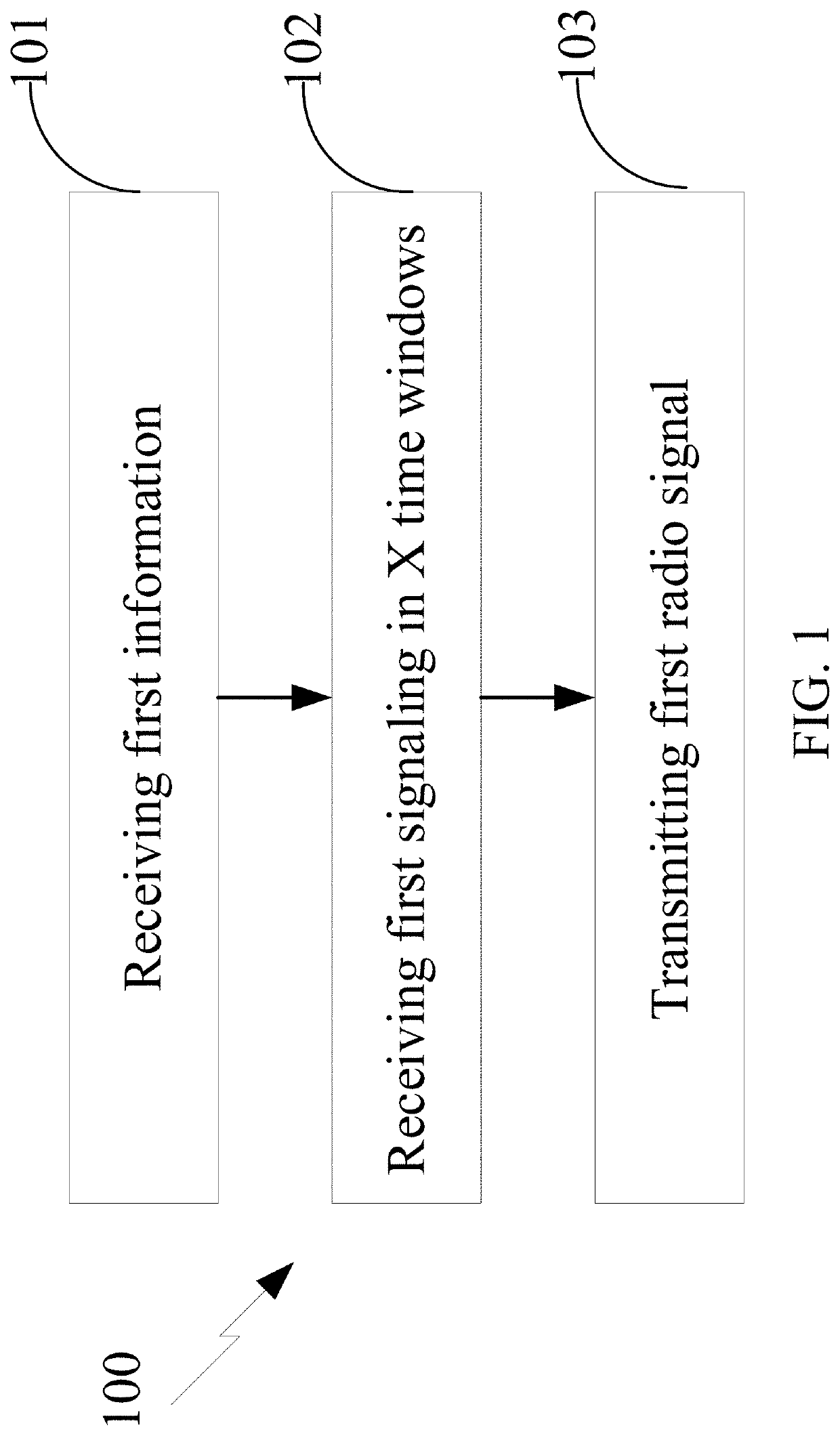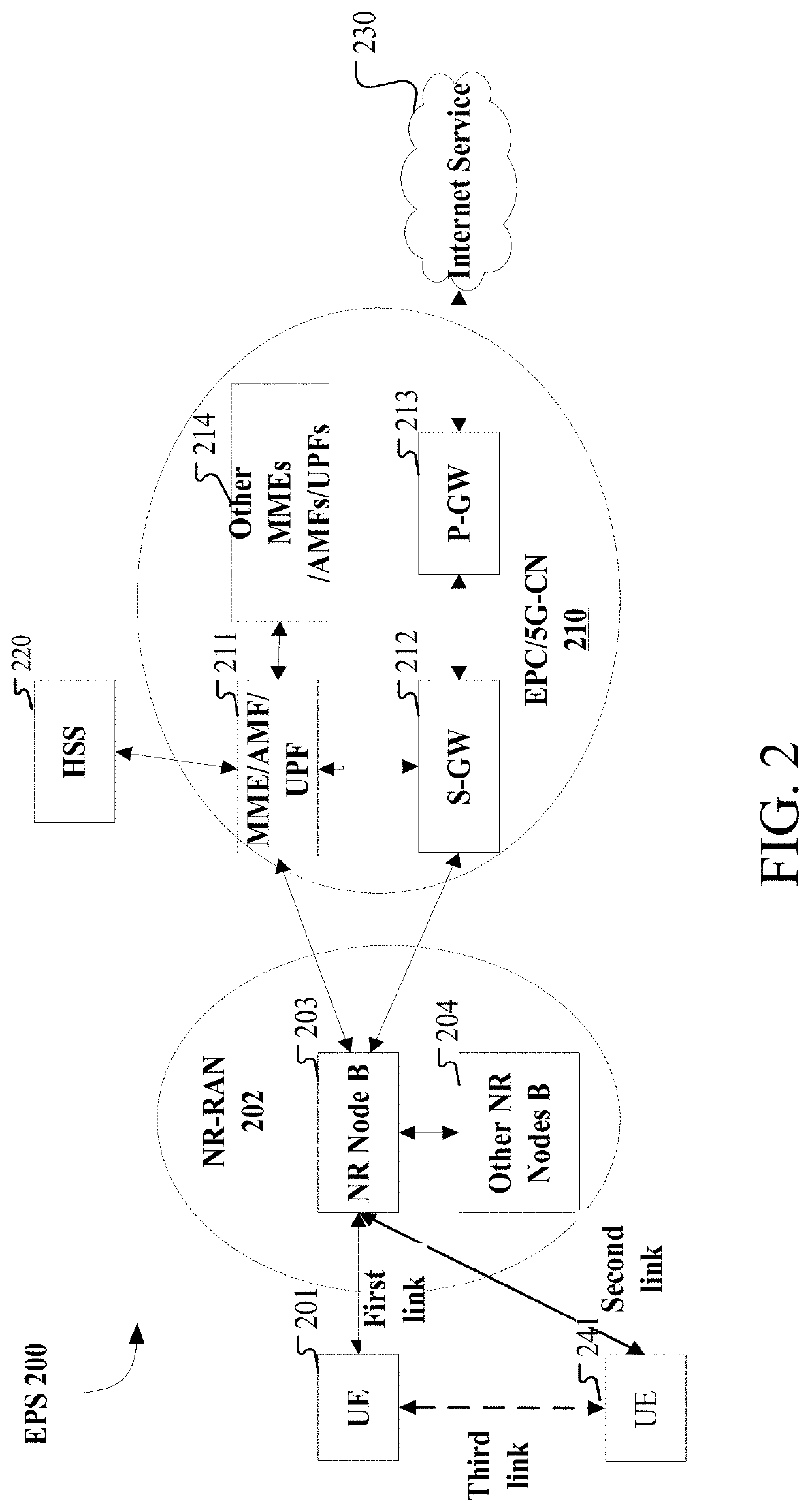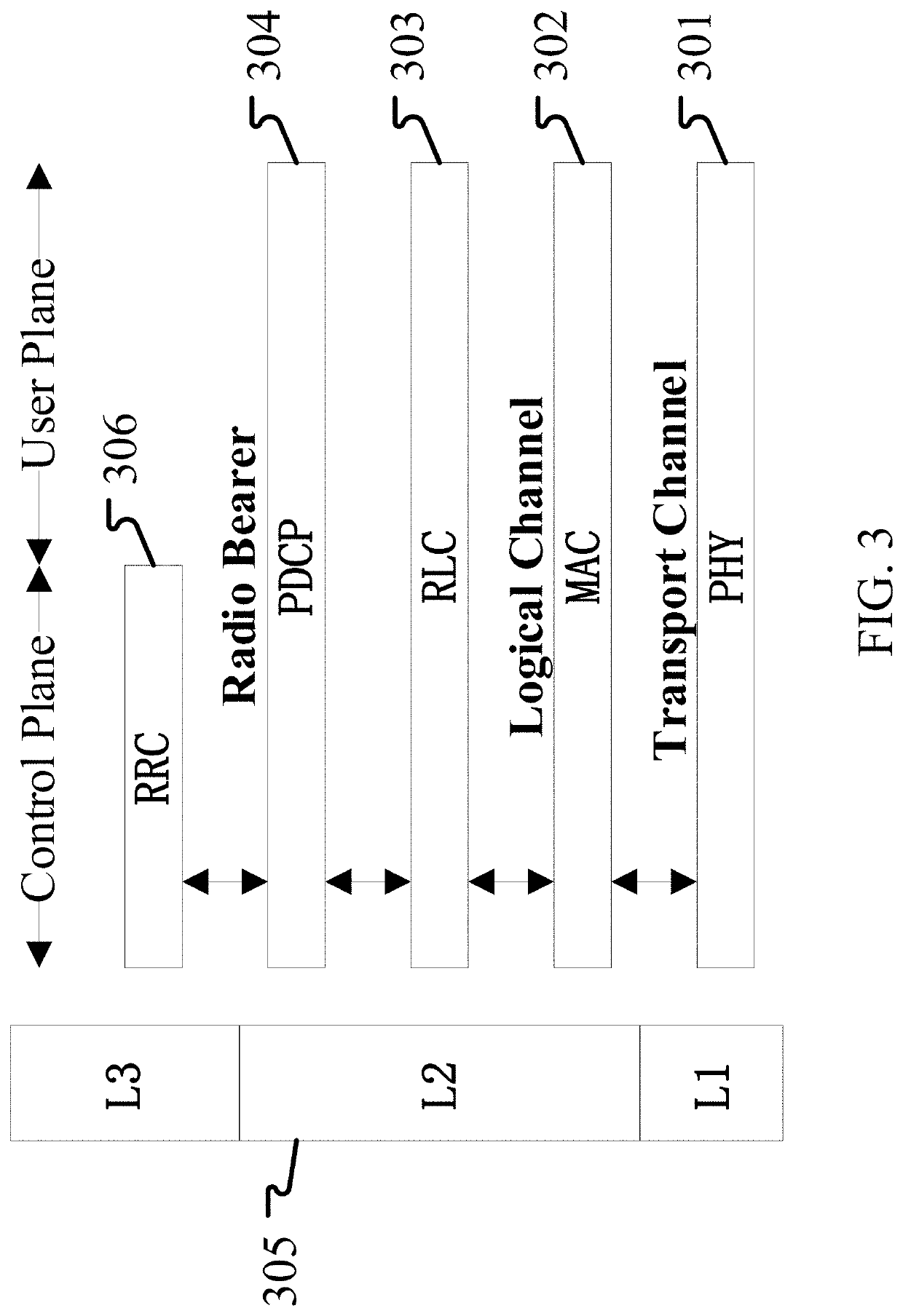Method and device in communication node used for wireless communication
a wireless communication and communication node technology, applied in the direction of wireless communication, synchronisation arrangement, electrical equipment, etc., can solve problems such as inter-carrier interference or performance degradation at link level or system level
- Summary
- Abstract
- Description
- Claims
- Application Information
AI Technical Summary
Benefits of technology
Problems solved by technology
Method used
Image
Examples
embodiment 1
[0082]Embodiment 1 illustrates a flowchart of transmission of first information, a first signaling, and a first radio signal according to one embodiment of the present disclosure, as shown in FIG. 1. In FIG. 1, each box represents a step. In Embodiment 1, the first-type communication node in the present disclosure first receives first information; then receives a first signaling in X time windows; and transmits a first radio signal; the first information is used to determine X time windows, and time-domain resources occupied by the first signaling are first time-domain resources, the X being a positive integer greater than 1; a start time for a transmission of the first radio signal is related to a first transmission timing adjustment and a second transmission timing adjustment; the first signaling is used to determine the first transmission timing adjustment, and the second transmission timing adjustment is related to a position of the first time-domain resources in the X time wind...
embodiment 2
[0162]Embodiment 2 illustrates a schematic diagram of a network architecture according to the present disclosure, as shown in FIG. 2. FIG. 2 illustrates the network architecture 200 of NR 5G, Long-Term Evolution (LTE) and Long-Term Evolution Advanced (LTE-A) systems. The NR 5G or LTE network architecture 200 may be called an Evolved Packet System (EPS) 200. The EPS 200 may comprise one or more UEs 201, an NG-RAN 202, an Evolved Packet Core / 5G-Core Network (EPC / 5G-CN) 210, a Home Subscriber Server (HSS) 220 and an Internet Service 230. The EPS may be interconnected with other access networks. For simple description, the entities / interfaces are not shown. As shown in the figure, the EPS provides packet switching services. Those skilled in the art will find it easy to understand that various concepts presented throughout the present disclosure can be extended to networks providing circuit switching services or other cellular networks. The NG-RAN comprises an NR node B (gNB) 203 and oth...
embodiment 3
[0167]Embodiment 3 illustrates a schematic diagram of an example of a radio protocol architecture of a user plane and a control plane according to one embodiment of the present disclosure, as shown in FIG. 3. FIG. 3 is a schematic diagram illustrating an embodiment of a radio protocol architecture of a user plane and a control plane. In FIG. 3, the radio protocol architecture for a first-type communication node (UE) and a second-type communication node (gNB, eNB or a satellite or an aircraft in NTN) is represented by three layers, which are a layer 1, a layer 2 and a layer 3, respectively. The layer 1 (L1) is the lowest layer and performs signal processing functions of various PHY layers. The L1 is called PHY 301 in the present disclosure. The layer 2 (L2) 305 is above the PHY 301, and is in charge of the link between a first-type communication node and a second-type communication node via the PHY 301. In the user plane, L2 305 comprises a Medium Access Control (MAC) sublayer 302, a...
PUM
 Login to View More
Login to View More Abstract
Description
Claims
Application Information
 Login to View More
Login to View More - R&D
- Intellectual Property
- Life Sciences
- Materials
- Tech Scout
- Unparalleled Data Quality
- Higher Quality Content
- 60% Fewer Hallucinations
Browse by: Latest US Patents, China's latest patents, Technical Efficacy Thesaurus, Application Domain, Technology Topic, Popular Technical Reports.
© 2025 PatSnap. All rights reserved.Legal|Privacy policy|Modern Slavery Act Transparency Statement|Sitemap|About US| Contact US: help@patsnap.com



